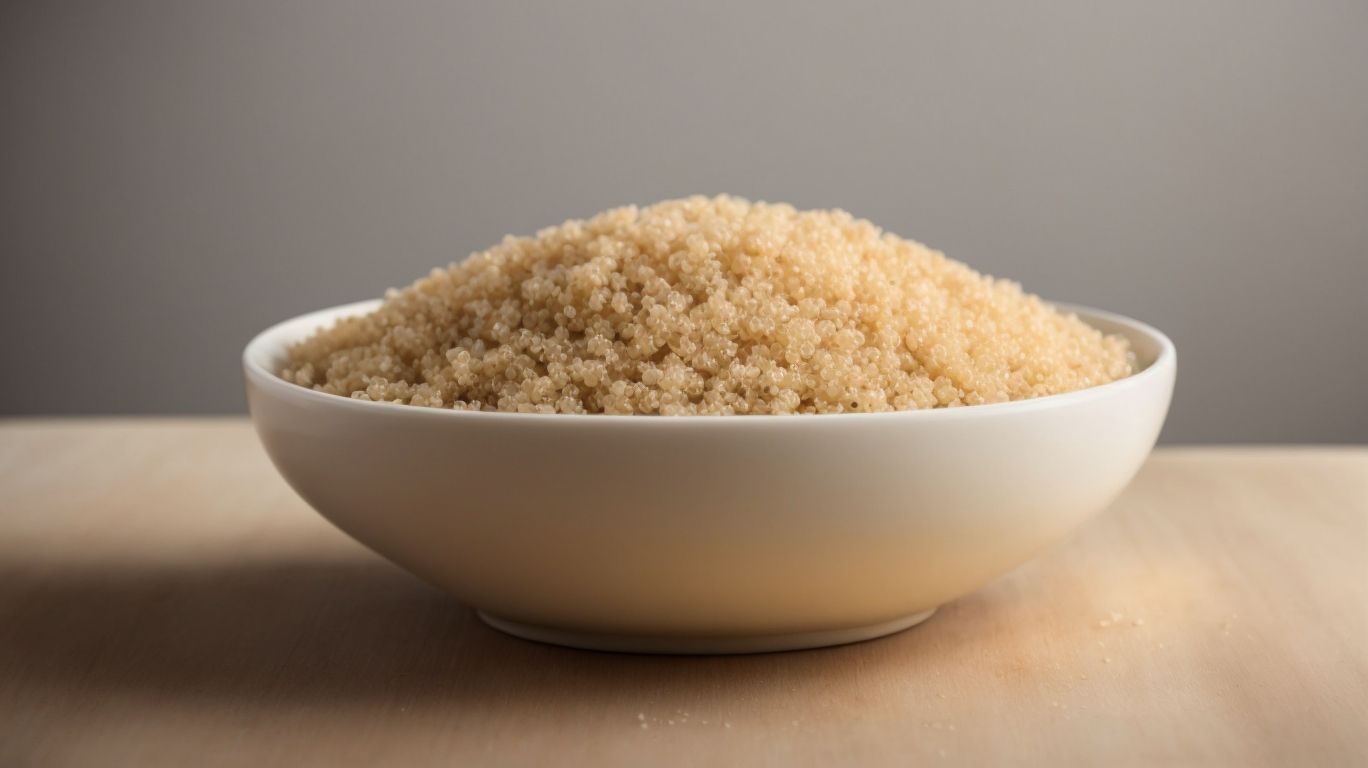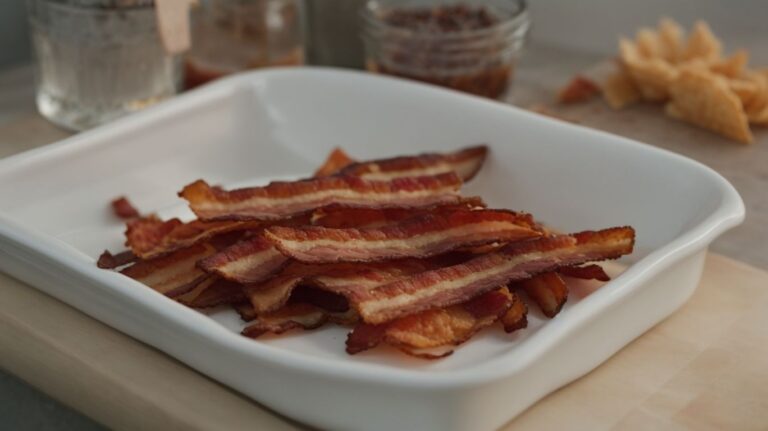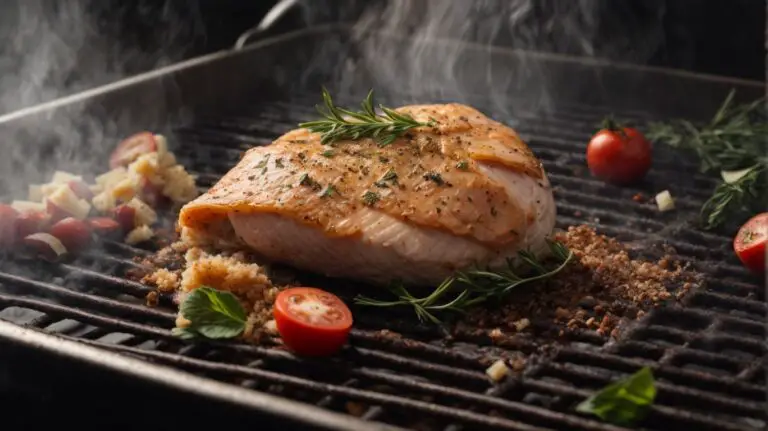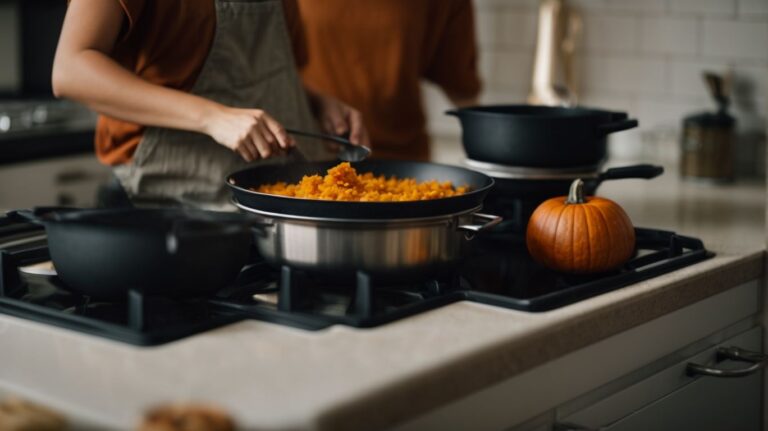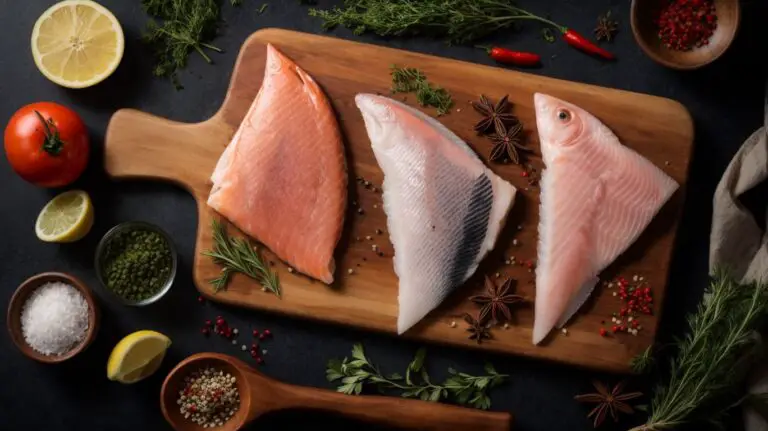How to Cook Quinoa Without Getting Mushy?
If you’ve ever cooked quinoa only to end up with a mushy mess, you’re not alone.
In this article, we’ll explore the ins and outs of quinoa – from its nutritional benefits to why it turns mushy when cooked.
We’ll also discuss common mistakes to avoid when cooking quinoa and provide you with practical tips on how to cook quinoa perfectly every time.
Whether you’re looking to make a quinoa salad, breakfast bowl, stir-fry, or veggie burger, we’ve got you covered. Let’s get cooking!
Key Takeaways:
What is Quinoa?
Quinoa, a versatile grain indigenous to South America, is renowned for its exceptional nutritional profile and high protein content.
This ancient grain has been cultivated for thousands of years by civilizations like the Incas in the Andes region. Quinoa is rich in essential nutrients, including fiber, iron, magnesium, and antioxidants, making it a valuable addition to a balanced diet. What makes quinoa stand out is its complete protein profile, containing all nine essential amino acids that the body needs for growth and repair. This makes it a great choice for vegetarians and vegans looking to increase their protein intake.
What Are the Nutritional Benefits of Quinoa?
Quinoa offers a plethora of health benefits due to its rich nutritional composition, including significant amounts of protein, manganese, magnesium, and copper.
Protein is crucial for repairing tissues and building muscles, making quinoa an excellent choice for vegetarians and vegans. Moreover, manganese acts as a cofactor for various enzymes involved in energy metabolism and antioxidant defense mechanisms. Magnesium plays a vital role in muscle function, energy production, and the maintenance of strong bones.
In addition, copper is essential for the formation of red blood cells and proper immune function. Incorporating quinoa into your diet not only provides a good source of these vital nutrients but also offers a delicious and versatile option for meals.
Why Does Quinoa Turn Mushy?
Understanding why quinoa turns mushy during cooking is crucial for achieving that perfect fluffy texture in your dishes.
Quinoa, a nutrient-rich pseudo-grain, contains natural saponins, which are soapy compounds that coat each grain. When quinoa is cooked, these saponins release and can cause the grains to become mushy if not rinsed properly beforehand.
The key to maintaining a fluffy texture lies in the water ratio and cooking technique. Ensure you use the correct amount of water, typically a 1:2 ratio of quinoa to water, and avoid overcooking or stirring too frequently to prevent clumping.
What Are the Common Mistakes When Cooking Quinoa?
Several common mistakes can occur when cooking quinoa, ranging from improper cooking techniques to inaccurate water ratios and overlooked crucial steps.
One key error to avoid is overcooking quinoa, which can result in a mushy texture and bland flavor. It’s essential to follow the correct water-to-quinoa ratio, typically 2 cups of water for 1 cup of quinoa. Another often underestimated step is rinsing the quinoa before cooking to remove the bitter saponin coating. Properly fluffing the quinoa with a fork after cooking is crucial to achieve a light and fluffy consistency.
How to Cook Quinoa Without Getting Mushy?
Mastering the art of cooking quinoa without it turning mushy involves specific steps like rinsing the quinoa, using the right amount of water, and covering it during cooking to achieve perfectly fluffy results.
Rinsing the quinoa helps remove the bitter coating called saponin that can affect its texture. Once rinsed, the ideal water to quinoa ratio is usually 2:1 for fluffy results. When cooking, cover the pot with a lid to trap the steam, ensuring even absorption and preventing excess moisture. Simmer the quinoa gently for around 15 minutes, then let it sit off the heat for a few minutes to finish steaming.
Rinse the Quinoa
Rinsing quinoa before cooking is a critical step to remove saponins and potential insecticides, ensuring a cleaner and safer grain for consumption.
Using a fine mesh strainer is recommended for this process as it helps in washing away these natural compounds and any dirt or debris clinging to the quinoa grains.
To effectively rinse quinoa, place it in the strainer and run cold water over it while gently agitating the grains with your fingers. Continue rinsing until the water runs clear, indicating that the saponins have been mostly removed. This method not only improves the taste of the quinoa but also enhances its digestibility and nutritional value.
Use the Right Ratio of Water to Quinoa
Achieving the perfect quinoa texture relies on using the correct water-to-quinoa ratio, a simple yet crucial step in the cooking process.
This ratio helps to ensure that the quinoa cooks evenly and absorbs the right amount of water, resulting in a fluffy and light texture. The water-to-quinoa ratio is typically 2:1, meaning for every cup of quinoa, you would use two cups of water.
By following this simple step, you can avoid ending up with mushy or soggy quinoa, which can happen if there is too much water in the cooking process. Keeping this ratio in mind is one of the easy steps to guarantee that your quinoa turns out perfectly each time.
Let the Quinoa Rest After Cooking
Allowing quinoa to rest after cooking is essential for achieving the desired fluffy perfection and enhancing its health benefits through optimal absorption of nutrients.
When quinoa is given the chance to rest, it continues absorbing any remaining liquid, resulting in a light and fluffy texture that is a delight to eat. This resting period also allows the grains to fully expand and soften, making them easier to digest. This process helps in retaining the key nutrients present in quinoa, such as protein, fiber, and essential vitamins and minerals. By prioritizing this resting step, you’re not only ensuring a delicious dish but also maximizing the health perks that quinoa offers.
Fluff the Quinoa with a Fork
Gently fluffing the cooked quinoa with a fork is a simple yet effective way to achieve that desired fluffy texture and enhance the protein-packed goodness of this grain.
When you fluff quinoa with a fork, you are essentially separating the individual grains and preventing them from clumping together. This not only improves the texture of the quinoa but also helps to ensure that each bite is light and airy, making it more enjoyable to eat.
Fluffing the quinoa helps to distribute any seasonings or dressings you’ve added more evenly, enhancing the overall flavor profile of the dish. This step is crucial in bringing out the nutty and slightly earthy taste of quinoa, ensuring a delicious culinary experience.
Use a Different Cooking Method
Exploring alternative cooking methods for quinoa can introduce a spectrum of colors and flavors, elevating your dishes with diverse culinary experiences.
One way to enhance the visual appeal of quinoa dishes is by utilizing a mix of red, black, and tri-colored quinoa varieties. Colorful quinoa not only adds vibrancy to your plate but also offers a range of nutty and earthy flavors that complement different dishes.
Another creative technique is infusing quinoa with aromatic herbs and spices during the cooking process. By simmering quinoa in broth infused with garlic, cumin, or fresh herbs like cilantro, you can elevate its taste profile, turning it into a versatile base for salads, pilafs, or even stuffed peppers.
What are the Best Ways to Use Cooked Quinoa?

Credits: Poormet.Com – Aaron Harris
Cooked quinoa opens up a world of culinary possibilities, perfect for creating nourishing bowls, vibrant salads, and wholesome recipes to support a healthy lifestyle.
With its nutty flavor and versatile texture, cooked quinoa can serve as a base for a variety of dishes. You can use it as a protein-packed ingredient in Buddha bowls topped with colorful veggies and a drizzle of tahini dressing. In salads, quinoa adds a satisfying chewiness that complements greens, nuts, and fruits for a filling meal. Experiment with incorporating quinoa into healthy recipes like stuffed bell peppers or as a substitute for rice in stir-fries.
Quinoa Salad
Quinoa salads offer a delightful combination of textures, colors, and flavors, making them a refreshing and nutritious meal option for any occasion.
These vibrant salads are not only visually appealing but also packed with a range of nutrients, making them a popular choice among health-conscious individuals. The beauty of quinoa salads lies in their versatility; they can be customized with an array of delicious toppings like roasted vegetables, nuts, seeds, fresh herbs, and creamy dressings.
The play of different colors in a quinoa salad adds not just visual appeal but also a variety of health benefits from the various vegetables and fruits incorporated. Whether you prefer a light and zesty lemon vinaigrette or a tangy balsamic glaze, the flavor combinations in quinoa salads are endless, catering to different palate preferences.
Quinoa Breakfast Bowl
Starting your day with a quinoa breakfast bowl filled with fresh fruits and wholesome ingredients sets a nutritious tone for your morning routine, ideal for meal prep enthusiasts.
Quinoa, as the main ingredient, is a powerhouse of essential nutrients like protein, fiber, and various vitamins and minerals, making it a perfect choice to kickstart your day with sustained energy levels.
Adding an array of fresh fruits not only enhances the visual appeal of your breakfast but also introduces a burst of antioxidants and natural sweetness, elevating the taste profile of your breakfast bowl.
What’s even better is the convenience it offers for busy mornings; prepping the ingredients ahead of time allows you to assemble your bowl swiftly, ensuring a balanced and fulfilling morning meal with minimal effort.
Quinoa Stir-fry
Quinoa stir-fry dishes offer a delectable blend of savory ingredients and bold flavors, creating a satisfying and aromatic culinary experience that tantalizes the taste buds.
One of the outstanding aspects of quinoa stir-fry recipes lies in their ability to accommodate a variety of vegetables and proteins, allowing for endless creative combinations that cater to different preferences and dietary needs.
The beauty of quinoa stir-fry is how it effortlessly absorbs the vibrant flavors of seasonings and sauces, enhancing the overall taste profile of the dish.
Whether you prefer a classic vegetable stir-fry or a protein-packed variation, quinoa proves to be a versatile base that lends itself well to diverse flavor profiles.
Quinoa Stuffed Peppers
Quinoa stuffed peppers offer a harmonious blend of sweet and savory notes, delivering a delicious and wholesome dish that satisfies both the palate and the soul.
The combination of nutty quinoa, vibrant bell peppers, and a variety of flavorful ingredients results in a culinary masterpiece that appeals to both vegetarians and meat-eaters alike.
The sweetness of the peppers complements the savory quinoa perfectly, creating a balanced flavor profile that keeps you coming back for more.
Whether enjoyed as a main course or a side dish, these stuffed peppers are as versatile as they are tasty, making them a go-to option for a quick and nutritious meal.
Quinoa Veggie Burgers
Quinoa veggie burgers are a protein-packed delight, featuring a nutty flavor profile and a wholesome combination of ingredients that cater to both vegetarians and meat-lovers alike.
These burgers offer a great alternative to traditional beef patties, providing a complete source of protein without sacrificing taste.
With their versatile nature, quinoa veggie burgers can be customized with various spices and toppings, allowing individuals to create unique, flavorful combinations to suit their dietary preferences.
The nutty undertones of quinoa lend a distinct taste that pairs well with a variety of buns, cheeses, and condiments, promising a satisfying culinary experience for all who indulge in them.
Frequently Asked Questions
How to Cook Quinoa Without Getting Mushy?
Quinoa is a delicious and nutritious grain that can be a great addition to any dish. However, cooking it can be a bit tricky, as it can easily become mushy if not prepared properly. Here are some FAQs to help you cook perfect quinoa every time.
What is the best way to cook quinoa without it getting mushy?
The best way to cook quinoa without it becoming mushy is to use the correct ratio of water to quinoa. For every cup of quinoa, use 1 ½ cups of water to cook it. This will ensure that the quinoa cooks evenly and does not become mushy.
Can I cook quinoa in a rice cooker?
Yes, you can cook quinoa in a rice cooker. Use the same ratio of water to quinoa as mentioned before and follow the instructions on your rice cooker. Quinoa will typically take about 20 minutes to cook in a rice cooker.
Should I rinse quinoa before cooking?
It is recommended to rinse quinoa before cooking to remove any bitter coating called saponin. To do this, place the quinoa in a fine-mesh strainer and rinse under cold water for a few minutes. Drain well before cooking.
Can I use chicken or vegetable broth instead of water to cook quinoa?
Yes, you can use chicken or vegetable broth to cook quinoa for added flavor. Just use the same ratio of broth to quinoa as you would with water.
How can I prevent quinoa from sticking to the pot?
To prevent quinoa from sticking to the pot, make sure to use a non-stick pot and stir the quinoa occasionally while cooking. You can also add a bit of oil or butter to the pot before adding the quinoa to prevent sticking.
Can I freeze cooked quinoa?
Yes, you can freeze cooked quinoa for up to 3 months. Let it cool completely before transferring it to an airtight container or freezer bag. To reheat, simply thaw in the fridge overnight and warm it up in the microwave or on the stovetop.

